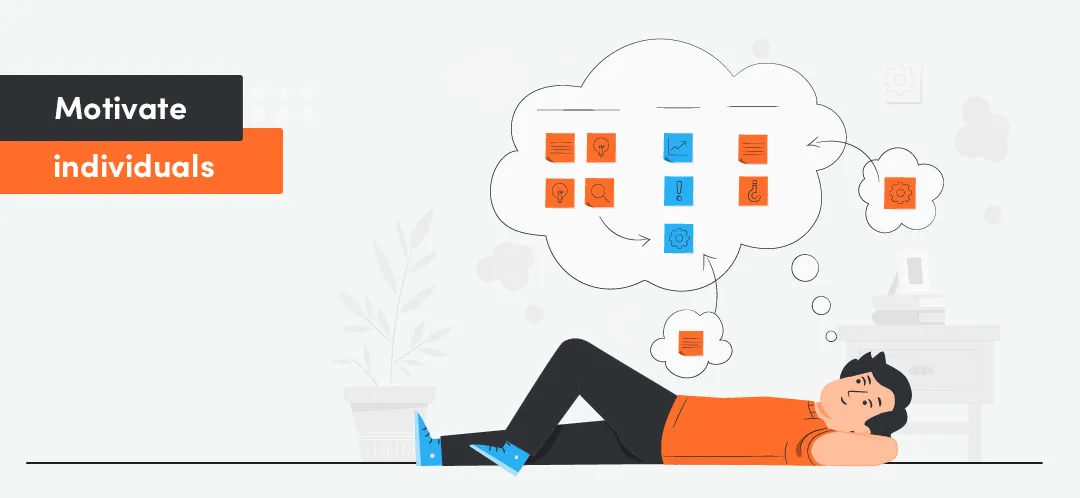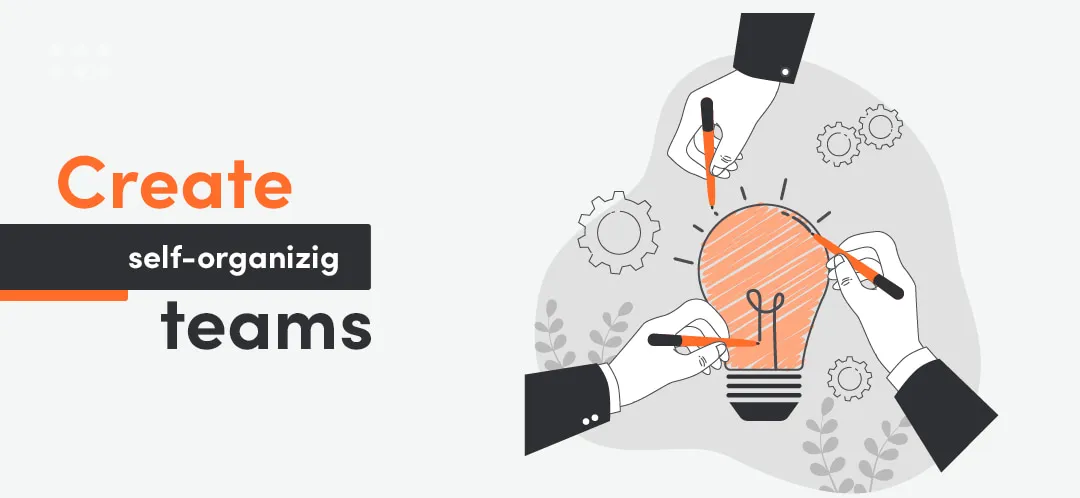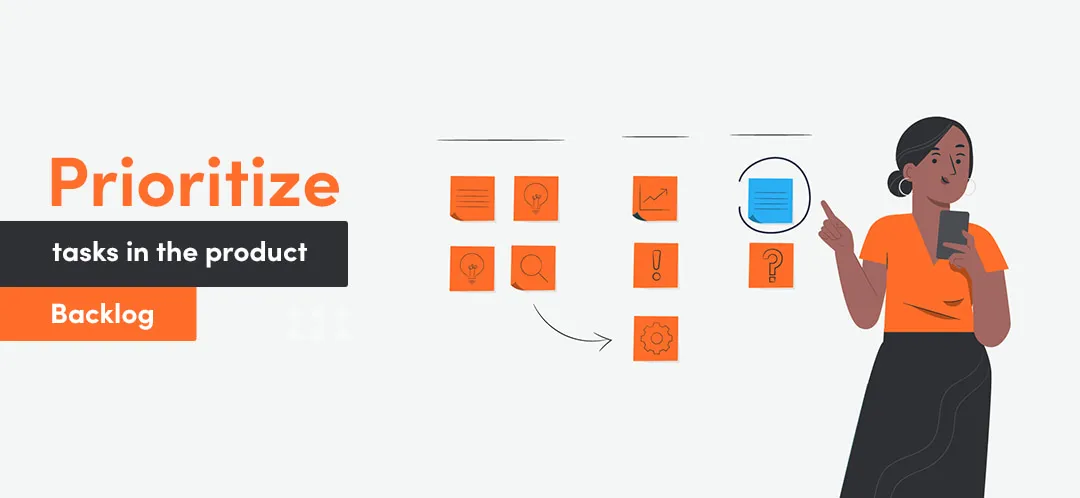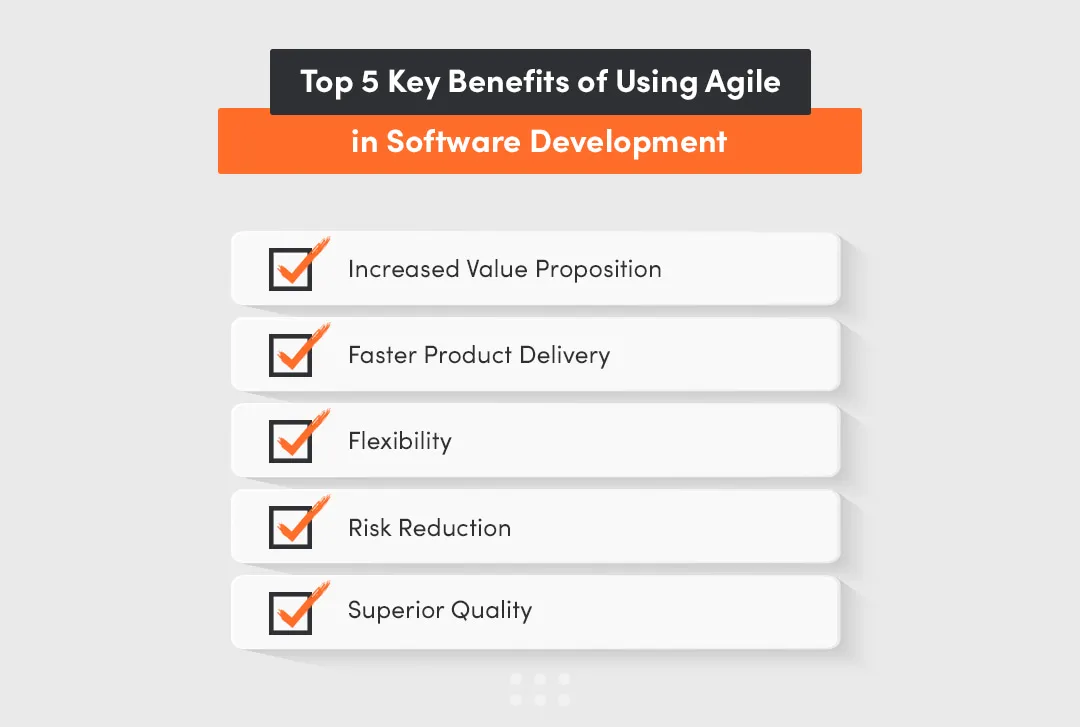The Agile approach has been the king of the software development industry for the last 20 years. Agile methodologies are far better than the preceding traditional Waterfall Methodology. Among the many benefits they offer to software development companies, the best ones are flexibility, speed and iterative development. By going with Agile methodology, development companies can not only adapt to changes whenever they like, but they also offer continuous delivery of the product to the clients in testing environments. You can read about Agile in more detail in one of my articles agile software development process - everything you need to know.
Due to the advantages it offers, most organizations have used Agile development practices to deliver value at a rapid pace. The Agile approach is more popular because it provides flexibility to adapt to changes, fosters collaboration among stakeholders and teams, and creates cohesion.
Previously, we had a discussion on agile core values and principles, and today I would like to focus on 7 best practices for Agile software development.
What are the best practices for Agile teams?
By using an iterative framework, the Agile approach relies upon the interaction of self-organizing teams who have the cross-functional skill-sets required to develop and test the working software. The most commonly used programming practices are based on the following tactics:
- Test-driven development
- Code refactoring
- Continuous integration
- Simple code design
- Pair-programming
- A common codebase and a single coding standard
It all contributes to the quality, flexibility, and sustainability of the software in Agile software development. To better understand Agile practices and methods, here is an example of some best practices for efficient and effective interaction in Agile teams.
# 1: Collaboration with the Customer
Customer satisfaction is indeed the first and foremost priority in the Agile approach. To deeply understand customer requirements, collaboration must be strong among both parties. In a traditional development method, a customer is involved only on the funnel's two ends, first at the beginning of collecting the requirements and second at the end of the funnel with the developed product. But in the Agile approach, the customer is involved throughout the whole process, clarifying expectations, collaborating on fixes, and communicating options not previously considered. The constant communication between the team and the customer promotes creativity and better customer satisfaction.

#2: Teamwork Quality
In Agile software development, a group of people works together as a team cohesive, leading to successful projects. There are six components of increased teamwork quality.
- Communication
- Coordination
- Balance of team member contributions
- Mutual support
- Effort
- Cohesion
There is a direct relationship between teamwork quality, team performance, and project success. Agile teams work on a simple equation that they can work more effectively if they depend on each other rather than depending on the tools that are the mainstays of software development. By working together, Agile teams can empower and embolden to take imaginative leaps that result in an innovative product. Hence, collaborative teamwork is one of the most important skills in the lexicon of Agile best practices. In my article on how to build high-performance agile teams, you can find tips useful for setting-up solid Agile teams.
It is worth emphasizing, that Agile teams do not operate in vacuums as they need to coordinate with the business stakeholders daily. It allows the Agile teams to brainstorm about features, functionality, or user-friendly solutions that introduce fresh ideas and insights. It’s important to note that stakeholders do not tell the team what to do but, instead, are guests in the Agile team’s war room.
#3: Individuals Motivation
Motivation is the driving force for any organization. Motivated employees perform 10% better and are the individuals who love their job, are focused on the team goal, and supportive of each other. With a motivated Agile team, an organization witnesses rhythm in their work and fast-paced speed. But, creating an environment where it all happens, isn’t easy.

In Tuckman's theory of group development, there are four stages that a team passes through. These stages are:
- Forming
- Storming
- Norming
- Performing
These stages help overcome the obstacles and deliver desired results. As the team's momentum starts gearing up, people who are accustomed to working alone adapt to the new change of working as a team. They become ready to take on required roles, collaborate with other team members, adopt a team way of doing the work and manage the work as per the process.
High-performing Agile teams comprise individuals with a broad set of skills that are necessary to effectively accomplish the work from their backlog. Team members must be open and highly motivated and the team must have both the authority and the accountability to achieve the goals they have been given.
#4: Effective Communication
In the Agile approach, the best way to communicate is face-to-face.
No matter if you are communicating with a teammate on a knotty problem or reporting your accomplishments on the daily meeting, face-to-face communication is the best practice. Let’s say if we send an email or a memo or a voice message and it gets lost among a hundred similar messages, who will be blamed for the delays? The daily meeting is one of the best ways to gather the entire team and connects them to determine if there are issues causing delays. In my article How to Run Remote Daily Scrum Meeting Effectively, you can find important steps that should be used to run a daily scrum with a remote team to focus your team’s attention and provide the most value for everyone involved.
Face-to-face communication builds trust, opens gates for feedback, and creates conversation among the teammates.
In scenarios like a global team, geographic isolation of working groups or individuals, and time zone differences, it is still preferred to communicate face-to-face by creating virtual rooms with videoconferencing services.
#5: Self-Organizing Teams
Agile software development is driven by creating self-organizing teams who work in harmony. Self-organizing teams are capable of deciding their pathways.
They decide how they will execute the work and who will do what. They also divide the tasks into small iterations which can be completed in each sprint. A self-organizing team is only created with team members who are confident in their work and can push through the most difficult and frustrating blocks. As a whole, a self-organizing team shares full responsibility and accountability for stepping out of the ways to resolve issues. If the outcome misses the mark, the team learns and adapts from their mistake.

Just remember, each team member must have extensive prior experience in his/her field. Agile teams do not intuitively know how to self-organize, plan and execute the project. It will require constant training, coaching, and mentoring to create an Agile team. A team that can perform at the fullest irrespective of any throttle or block.
#6: Team Effectiveness
In the Agile approach, the team works and evaluates their performance daily. As individuals and as a group, development teams are open to mentoring and coaching. However, as one Agile coach notes, the team doesn't respond well to management's command and control. As prior mentioned, they work well when self-organizing.
Agile teams figure things out on their own. Team members share what went well and what went wrong and then identify how to improve the next go-around process. In a Scrum team retrospective, each member suggests something the team should start doing, stop doing, and continue doing.
Based on the pointer discussed in these meetings, the team adjusts their behaviour accordingly. Over time, the team builds its catalogue of Agile best practices and performs them daily. Technology is as important in Agile teams as individuals.
Agile teams use numerous applications to complete their work and streamline the development process. One such tool is the online Kanban board, which helps Agile teams to visualize the workflow, plan everyday tasks, and track progress.
#7: Tasks Prioritization
Backlog management is also another best practice for Agile software development. It is the responsibility of the Product Owner to record tasks in the backlog and assign their priorities. The Product Owner changes and sets the priority of the backlog item list based on stakeholder feedback and project circumstances.

Higher priority tasks will be assigned first to the respective team members in each iteration or sprint. Assigning priority to the backlog tasks also provides the team members knowledge of what is coming next.
As you can see, these Agile best practices are basically a rich array of options to be followed. When an Agile team uses these best practices in their daily routines, they witness numerous advantages. Let's have a look at some of the benefits of Agile best practices.
Top 5 Key Benefits of Using Agile in Software Development
Here are some of the most prominent Agile approach benefits:

Benefit #1: Increased Value Proposition
In today’s economy, having a compelling business value proposition and being able to deliver against that promise is crucial. Agile methodologies offer an increased value proposition compared to traditional software development methods. It is possible by adding visibility, adaptability of business value and risk throughout the development process.
Benefit #2: Faster Product Delivery
Agile project management and related software development lead to increased productivity and quicker delivery compared to traditional methods. The Agile team works in sprints developing a set of features, testing and implementing it in the testing environment for the customer's review. It allows products to be rolled out quickly and changes to be easily made at any point during the development process.
Benefit #3: Flexibility

The incremental nature of Agile software development means that projects are completed in shorter sprints, making them more manageable, which brings flexibility to adopt changes if needed. Unlike the traditional Waterfall method that doesn’t offer any backward movement, the Agile method gives the flexibility to make changes in between iterations. The customer is able to make tweaks to their expectations and desires throughout the process. The flexibility of the Agile methods allows software development teams to respond to customer reaction and constantly improve the product.
Benefit #4: Risk Reduction
The Agile approach of development suggests to prioritize and organize the backlog of stories according to the customer’s vision well in advance. When these stories are developed and delivered in an MVP (minimum viable product), it helps gather feedback based on initial releases. The iterative and incremental development thus results in foolproof deliveries, no matter how long the project lasts.
Benefit #5: Superior Quality
Agile practices emphasize cross-functional and self-organizing teams that maintain constant communication and share ownership, which naturally contributes to the effective management of technical debt. The iterative nature of Agile methodologies allows teams to identify problems and develop solutions quickly and efficiently. This approach helps minimize the cost of additional rework, often referred to as technical debt, by fostering an environment where issues can be addressed promptly before they escalate.
In Agile environments, development tasks are:
- broken down into smaller,
- manageable components,
- rather than tackling one large task.
This subdivision enhances the team's ability to master iterations and continuously refine each segment of the project. It is about improving and perfecting smaller tasks incrementally, which prevents the complexities and potential errors of managing a larger, monolithic product all at once. This method not only reduces technical debt but also accelerates the time to market, as teams can polish each part of the product systematically.
Managing technical debt in Agile is not about eliminating it entirely—since that’s often not feasible—but rather about controlling and optimizing its impact on the project.
Agile frameworks, with their focus on continuous improvement and adaptation, provide an ideal structure for managing technical debt effectively. This ensures that software remains of high quality and development processes stay efficient, allowing teams to sustain productivity and innovation over time.
Try our developers.
Free for 2 weeks.
No risk. Just results. Get a feel for our process, speed, and quality — work with our developers for a trial sprint and see why global companies choose Selleo.
First Steps in Agile Methodology - Guide
Start by familiarizing yourself and your team with the core values and principles outlined in the Agile Manifesto. These principles emphasize collaboration, flexibility, continuous improvement, and high-quality results. Understanding these values is crucial as they guide the decision-making process in an Agile environment.
Choose the Right Agile Methodology:
There are several Agile frameworks available, such as Scrum, Kanban, and Extreme Programming (XP). Each has its own strengths and is suited to different types of projects and organizational cultures.
- Scrum is great for projects that require frequent reassessment and adaptation. It’s structured around fixed-length iterations called sprints.
- Kanban focuses on continuous delivery and is highly flexible with no fixed iteration lengths. It’s ideal for projects with ongoing or varying priorities.
Train Your Team - Organize training sessions for your team to ensure everyone understands Agile methodologies and their roles within them. Consider hiring an Agile coach to help guide your team through the transition period, providing them with the skills necessary to thrive in an Agile environment.
Set Up Agile Teams - Form small cross-functional teams that include members with various areas of expertise. Ensure that each team has all the competencies needed to complete their tasks, from ideation to delivery. This setup enhances collaboration and speeds up the decision-making process.
Set Up Agile Teams - Form small cross-functional teams that include members with various areas of expertise. Ensure that each team has all the competencies needed to complete their tasks, from ideation to delivery. This setup enhances collaboration and speeds up the decision-making process.
Define Your Product Vision and Roadmap - Clearly define what your product is and what you aim to achieve. The product vision guides the development team and aligns stakeholders and developers. Additionally, develop a product roadmap that outlines the major milestones and features planned for the product.
Start with a Pilot Project - Implement Agile on a small scale before rolling it out across the organization. Choose a pilot project that is small but significant enough to provide clear insights into how Agile could work within your organization. This allows you to see what works and what doesn’t and make necessary adjustments before a full-scale implementation.
Implement Regular Meetings (Ceremonies):
- Adopt Agile ceremonies that promote frequent communication and continuous improvement.
- Daily Standups to check on progress and address immediate concerns.
- Sprint Planning Meetings to plan the work for the upcoming sprint.
- Sprint Reviews to demonstrate new features and gather feedback.
- Sprint Retrospectives to reflect on the past sprint and improve the process.
Use Agile Tools - Utilize tools that support Agile practices, such as Jira, Trello, or Asana. These tools help track progress, manage backlogs, and maintain transparency across the team.
Embrace Change and Continuous Improvement - Agile is all about adapting to change and continuous improvement. Encourage feedback from all stakeholders and be prepared to make frequent adjustments to processes, strategies, and products based on this feedback.
Measure and Adapt - Define metrics to measure the success of your Agile implementation, such as team velocity, quality of deliverables, and stakeholder satisfaction. Use these metrics to refine and improve your Agile practices continually.
Conclusion
It doesn't matter if the project is complex or large, scaling an Agile is always most effective for organizations. Once the teams start practising Agile recommended tactics such as sticking to short iterations, getting rapid feedback from customers, setting value-based business priorities, and engaging users in refining requirements, nothing will stop the organization from becoming more productive. It is the core values and guiding principles for how people work together that make Agile methods sustainable.
Taking a more Agile approach to projects offers a number of advantages to a business, ultimately making it more efficient and successful.
The best Agile practices for high-performing teams include fostering effective communication through daily stand-ups, where team members align on progress and address blockers. Prioritizing work with a clear backlog ensures that the team focuses on delivering the most valuable features. Regular sprint reviews and retrospectives help identify improvement areas and celebrate successes, enhancing team collaboration and performance. Continuous integration and testing ensure high-quality deliverables by detecting and resolving issues early. Lastly, empowering team members with autonomy and accountability encourages innovation and ownership of the project's success.
- Scrum: A framework focused on iterative development, emphasizing roles (Scrum Master, Product Owner, Team), events (sprints, daily stand-ups, sprint reviews), and artifacts (backlog, sprint goals).
- Kanban: A visual workflow management method using a Kanban board to track tasks, limit work in progress (WIP), and optimize continuous delivery.
- Lean: Centered on eliminating waste, improving efficiency, and delivering maximum value to the customer through iterative development.
- Extreme Programming (XP): A methodology emphasizing high-quality software through frequent releases, pair programming, test-driven development, and continuous feedback.
- Crystal: A family of methodologies tailored to project size and criticality, focusing on people, interactions, and adaptability over rigid processes.





